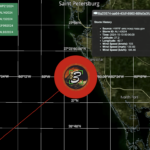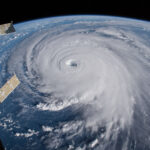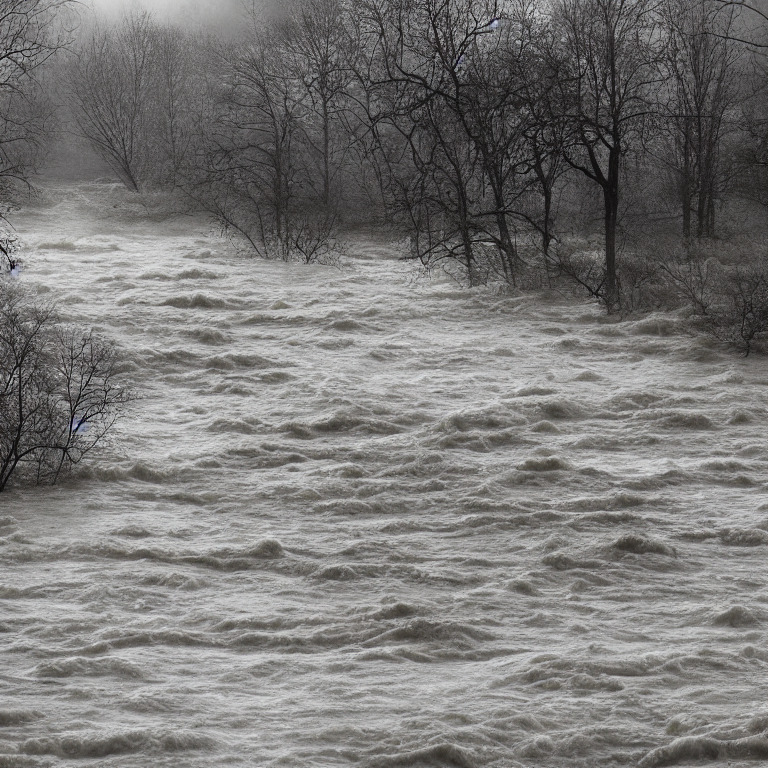Waterlogging and floods are menacing nuisances in California that continue to persist.
Although atmospheric rivers may appear like something out of a travelogue, they can actually do a lot of harm.
Long waves that travel in the skies like rivers do on the ground arise when water dissipates into the atmosphere and is carried by the wind.
Both mountain snow and heavy rainfall may result from them.
California Plagued by Atmospheric Floods
The torrential downpours in California this season are also in part due to atmospheric rivers.
Between December 31, 2022, and January 25, 2023, many atmospheric rivers in California triggered periods of intense rainfall that led to floods that impacted sections of Southern California, the Californian Central Coast, Northern California, and Nevada. Property damage caused by the flooding. It was the most deadly meteorological event to date in the United States, with as well as at least 22 fatalities.
Atmospheric rivers refer to storms that are similar to rivers up in the sky that discard colossal amounts of rainfall.
Image of Atmospheric Flood Generated via Stability-AI
This can cause floods and deluges even resulting in loss of property and immense risk to life. More possibilities include mudslides and landslides.
What is the Pineapple Express?
The Pineapple Express, a strip of water vapor that originates in Hawaii where warm conditions assist ocean waters evaporating into the sky, constitutes one of the most prominent atmospheric rivers.
Why is California most affected?
After entering the air, winds quickly transport the vapor onward, where it condenses and pours as snow or rainfall if it is raised when a front hits or crosses mountains.
It frequently sends rain to California and other western states, especially during the colder months of winter.
Atmospheric rivers can be up to 350 miles wide and 1,000 miles long (1,600 km). The federal government believes that atmospheric rivers contribute 50% of California’s average rainfall in the form of rain and snow.
Satellite Image of Atmospheric Floods In California Generated via Stability-AI
But, the recent moisture plumes that have affected California have also coincided with other extreme weather, such as “bomb cyclones,” which is another name for a low-pressure system that is rapidly intensifying.
Thousands of households in California have been left without power and at least 35 persons have died as a result of these severe storms this year.
The West has had severe droughts, which have impacted the area’s capacity to absorb water, increasing the likelihood of flooding.
Because burn scars increase the likelihood of landslides, wildfires have also made some regions unstable.
At least 11 atmospheric rivers have already battered the state this season. Similar to a fire hose, an atmospheric river transports moisture from the air from the tropic to high elevations, where it dumps unrelenting rain or snow.
Current Situation In California
Currently, California is reeling from the ill effects of the 12th atmospheric flood that has been ravaging the state leaving thousands of people displaced and homeless.
People have had to vacate their flooded homes and seek refuge elsewhere.
According to CNN people’s lives have been washed down the river.
Riverfront villages in central California were among the hardest hit over the weekend. Here, multiple tributaries distended by the overflow of rainfall and melting snow from nearby mountains were converted into raging rivers.
According to UCLA climatologist Daniel Swain, as the most recent storm approaches, he says, it’s not going to require an enormous amount of moisture to result in instantaneous overflow and increases in streams and rivers, and flooding throughout urban areas.
Once the Pajaro River’s levee collapsed on Friday, more than 8,500 residents were required to leave. As flooding engulfed fields and agricultural communities, fifty individuals were saved.
The additional atmospheric river is making it harder to control the flooding, according to officials. Migrant farm laborers, many of whom were displaced, are ineligible for federal disaster aid. According to Luis Alejo, chairman of the Monterey county supervisory board, “over 20,000 acres of farm areas in Monterey county now will remain fallow owing to storm contamination of water, creating major employment losses and an influence on our nation’s food supply”.
Image Of Deluge Caused due to the floods generated via Stability-AI
On Monday morning, more people were evacuated as a result of the Salinas River towards the south also overflowing. Residential streets were submerged, businesses were flooded, and portions of California’s iconic coastal Route 1 were underwater.
Northern Nevada saw avalanches, rockslides, and flooding as a result of the storms, and additional devastation is anticipated there in the days ahead. In a statement, Governor Joe Lombardo urged “all Nevadans to keep safe, travel slowly, and to follow all local advice all through the duration of this severe weather” and extended an announcement to cover northern regions as well as a handful of other counties.
Image of people left homeless due to flood generated via Stability-AI
According to experts, the increasing occurrence and severity of these storms during periods of protracted drought are signs of human-caused climate change. The complexity of maintaining California’s scarce water supply while lowering flood and wildfire threats has intensified due to the shift from one extreme to the next.
Despite the fact that the atmospheric rivers often disrupted many Californians’ lives and caused damage to their homes and livelihoods, the subsequent rains have also helped ease the state’s protracted drought.
Only the atmospheric river from last week broke rainfall data records in Santa Barbara, Santa Maria, and Los Angeles.
The Southern California Water Board has suspended urgent drought conservation efforts for more than 7 million people due to the excessive rain.
Floods mitigated the drought situation
According to the United States Drought Monitor, the amount of California that is currently experiencing a severe drought has decreased from 80.6% barely three months ago to barely 8% this week. Only slightly more than a third of the state is still experiencing drought.
Conclusion
Back-to-back atmospheric rivers may be just as problematic as they are helpful since the water from one storm does not have time to flow or absorb into the ground before another storm drops more. Rain and snow are typically welcome sights in the drought-stricken state.
Further atmospheric rivers are anticipated to slam the region in the second portion of March as it works to recoup from the flooding and fallen trees.
***
Generate similar images by clicking on https://replicate.com/stability-ai/stable-diffusion
References :
- Levinson-King, B. R. (2023, March 13). California weather: What are the atmospheric rivers? BBC News. https://www.bbc.com/news/world-us-canada-64217329
- Singh, M. (2023, March 14). More ‘atmospheric river’ storms to sweep across California after days of rain and floods. The Guardian. https://www.theguardian.com/us-news/2023/mar/13/california-weather-atmospheric-river-flooding
- Salahieh, N., Shackelford, R., & Yan, H. (2023a, March 20). Another atmospheric river will thrash storm-ravaged California, threatening more flooding and hurricane-force wind gusts. CNN. https://edition.cnn.com/2023/03/20/weather/california-atmospheric-river-monday/index.html
- Borunda, A. (2023, March 13). ‘Rivers in the sky’ are why California keeps flooding. Environment. https://www.nationalgeographic.com/environment/article/atmospheric-river-flood-rain-california-explainer











